
views
X
Expert Source
Patrick EvanProfessional Hair Stylist
Expert Interview. 17 January 2019.
It takes patience and the right hair care products to get your locks as soft and silky as you'd like, but that doesn't mean you're doomed to bad hair days for the foreseeable future.
Here are 14 effective ways to treat fried hair and restore its natural softness and shine.
Apply a hair mask.
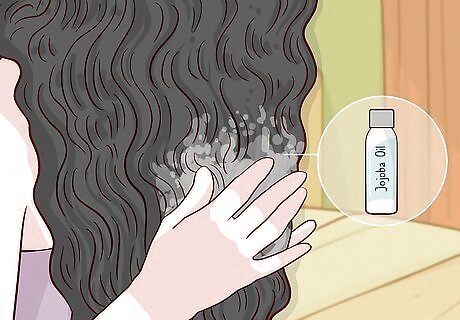
Fried hair is dehydrated, so it requires serious moisture. A hair mask contains more moisturizing ingredients than regular conditioners so it can hydrate your hair more effectively. Use the mask after you’ve washed and towel dried your hair, and leave it on for however long the package says. Rinse it out with cool water. Use a hair mask once a week. Look for a hair mask with ingredients that can help damaged hair, such as jojoba oil, argan oil, wheat proteins, and keratin. If your hair is extremely fried and damaged, you may want to leave the mask on overnight. Wear a shower cap or plastic wrap over the mask so it doesn’t stain your pillowcases or sheets. To make your own hair mask, combine 2 tablespoons (30 mL) of coconut oil, 1 tablespoon (15 mL) of olive oil, and 1/2 cup (120 mL) of honey.
Try an oil treatment.
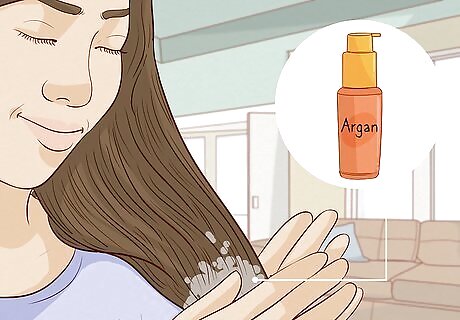
Adding more oil to your hair can help lock in hydration and moisture. Apply 4 to 5 drops of oil to your palm and rub it between your hands. Work it through the length of your hair from the ears down while it’s still wet, then rinse it out after about 30 minutes. Repeat once a week. A variety of oils work well for the hair, such as argan, coconut, jojoba, macadamia, and almond. You can also find serums that contain a blend of 2 or more oils. You can also apply an oil to the ends of dry, fried hair. Only use one or two drops, though, or your hair may wind up looking greasy.
Try a deep conditioner.
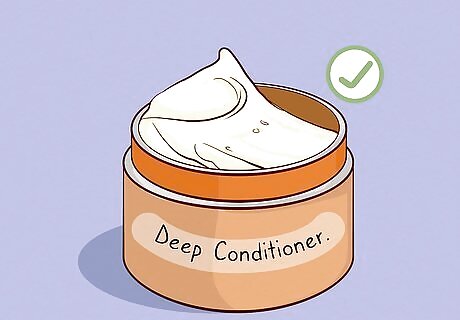
Give your hair an extra moisturizing boost with a deep conditioner. After you wash your hair, apply a dime-sized amount of deep conditioner to the ends of your hair and let it sit for at least 10 minutes. Rinse it out thoroughly before you get out of the shower for hydrated, moisturized hair. You can do a deep conditioning treatment about once a week. Deep conditioners penetrate much deeper into your hair cuticle, leading to more intense hydration.
Do a hair bond treatment.
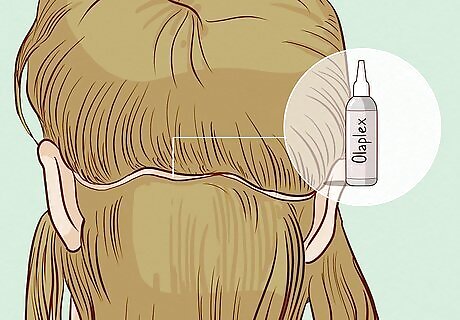
Hair bonding treatments help protect the outer cuticle from damage. While most hair stylists use hair bond treatments alongside colors or bleach, you can use hair bond treatments on your already-damaged hair. Apply 1 tsp (4.9 mL) on your hair once a week before you wash it, then let it sit for 10 to 30 minutes before rinsing it out. Look for hair bond treatments brands like Olaplex and Schwarzkopf at your local beauty store.
Strengthen your hair with a protein treatment.
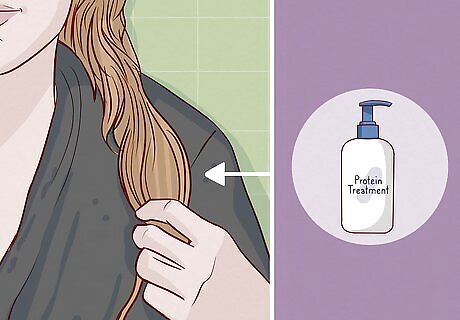
Protein treatments make your hair stronger so it can repair itself faster. Wash your hair and condition it, then apply the protein treatment while your hair is still wet. Leave it on for 20 to 30 minutes before rinsing and drying your hair. You can do protein treatments once or twice a month to repair your damaged hair. Pick out a protein treatment that’s formulated for your hair type. You can usually see which hair type they’re meant for on the packaging.
Cut down on how often you wash your hair.
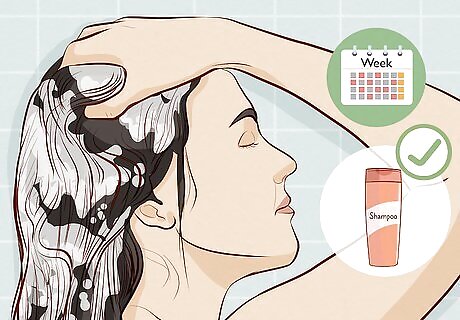
Washing your hair too often can dry out your already damaged locks. Instead of washing every day, try to shampoo every 2 to 3 days to keep your hair hydrated and leave the natural oils on your scalp. Concentrate the shampoo at your scalp when you wash and only work the lather down to the ends to avoid removing too much moisture.
Find products without silicones and sulfates.
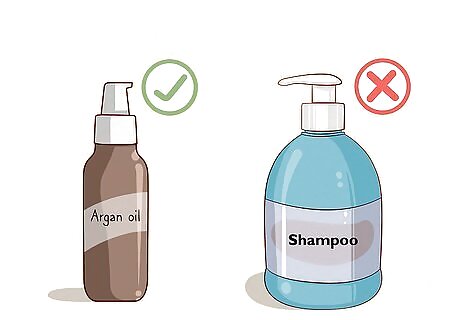
Silicones and sulfates strip the moisture out of your hair. Choose moisturizing products with ingredients such as olive or argan oil, or glycerin, sorbitol, or shea butter. Avoid shampoos that contain mineral oil and petrolatum, which can actually form a film that keeps moisture out of your hair. It’s fine to use products with silicones and sulfates in them occasionally, but using them too much can make your hair feel dry.
Always use a conditioner after you shampoo.
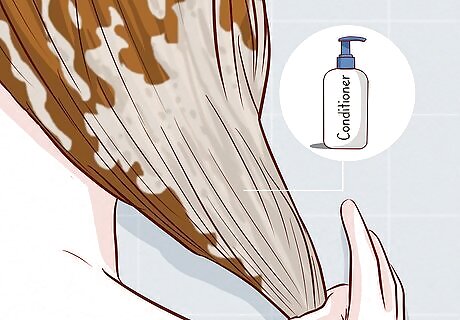
Give your hair some moisture with a conditioner. Look for hydrating conditioners with shea butter or argan oil in them. Every time you shampoo your hair, be sure to follow it with hydration. Apply the conditioner to your hair and let it sit for about 2 to 3 minutes before rinsing. If you’d like to protect your hair as it dries, follow up with a leave-in conditioner for all day hydration.
Use a microfiber towel to dry your hair.
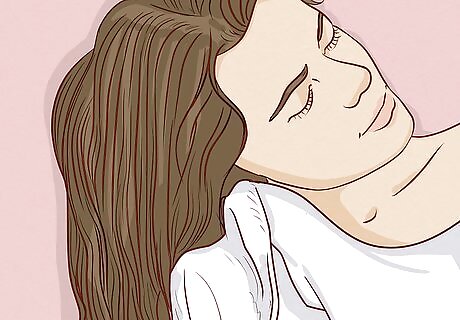
Rough towels can dry out your hair and make it frizzy. When you get out of the shower, try gently patting your hair dry with a microfiber towel instead. If you don’t have a microfiber towel, use a cotton T-shirt to pat your hair dry and then wrap it up. Microfiber towels are also great to help cut down on frizz if you have naturally wavy or curly hair. Instead of rubbing your hair dry, try wrapping it in a towel and piling it on top of your head to remove excess moisture.
Limit your heat styling.
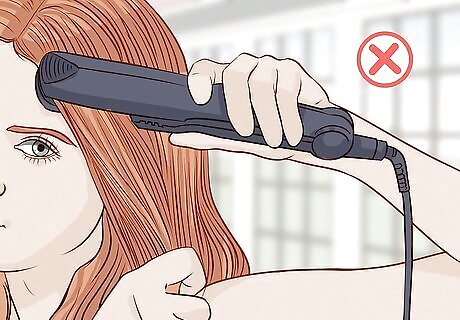
Heat styling tends to dry out your hair, which can damage it more. That’s why it’s an especially bad idea when your hair is fried. Try to limit your use of curling irons, flat irons, and even blow dryers as much as possible. Let your hair air dry when you wash it, and play up your hair’s natural texture rather than curling or straightening it. When you do heat style your hair, always use a heat protectant first to limit the damage to your locks. Cream or lotion heat protectant formulas are best for coarse or thick hair, while sprays work better for fine or thin hair. Use curlers or bobby pins to create fun looks without the heat.
Sleep on a silk pillowcase.
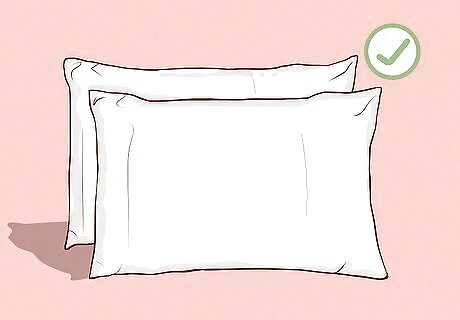
Linen and cotton pillowcases strip the moisture from your hair as you sleep. Switch to a silk pillowcase to cut down on frizz and hydrate your locks overnight. If a silk pillowcase isn’t appealing to you, consider using a silk head wrap instead. While silk pillowcases sound fancy, you can find good ones at most home goods stores for around $20. Silk pillowcases can also help preserve your natural waves or curls overnight.
Trim your hair every 6 to 8 weeks.
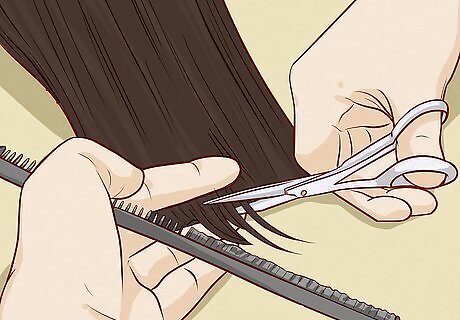
Snip off the damaged ends of your hair for a fresher look and feel. Usually, the ends show the most damage, especially if your hair is long. Try to trim off about ⁄2 in (1.3 cm) at minimum for the best look. Consider getting layers to remove the damage without sacrificing length.
Protect your hair from the elements.

Sun, saltwater, and chlorine can damage your hair further. Wear a hat if you’re going to be out in the sun all day to protect it from the UV rays. If you’re going swimming, wear a swim cap or rinse your hair out as soon as possible to limit the exposure to saltwater or chlorine. Some leave-in conditioners and other styling products contain ingredients that contain UV-ray protectants that keep your hair safe from the sun too. Before you go swimming, it’s also a good idea to apply a leave-in conditioner to your hair to keep it from absorbing damaging chemicals and minerals that might be in the water.
Take a break from coloring your hair.
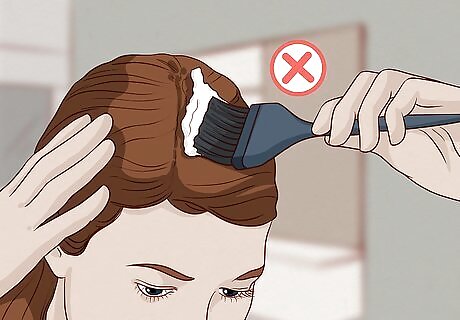
Adding a new color or bleaching can make your hair dry. While occasional coloring treatments won't hurt, avoid using bleach as much as possible. Make changes to your color slowly by gradually adding color instead of suddenly switching to a new shade. If you do want to color your hair, try going for a hair gloss instead of a full color. A gloss can make your hair look shiny and bright without any damage at all.












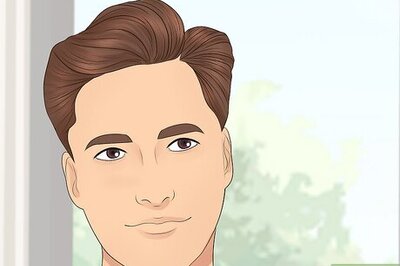


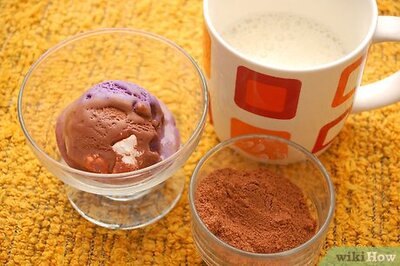
Comments
0 comment